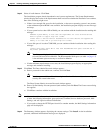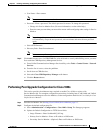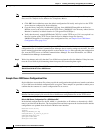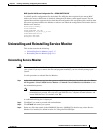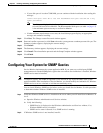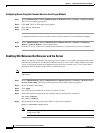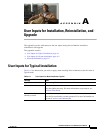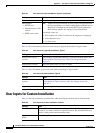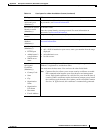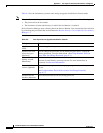
CHAPTER
3-1
Installation Guide for Cisco Unified Service Monitor
OL-25111-01
3
Getting Started with Service Monitor
This section contains the following topics:
• Configuring Security, page 3-1
• Configuring Service Monitor, page 3-3
Configuring Security
Service Monitor relies on security that you configure using Common Services. To get started, see these
topics:
• Configuring Users (ACS and Local RBAC), page 3-1
• Enabling SSL Between the Browser and the Server, page 3-2
For more information, see Setting Up Security in the Common Services online help.
Configuring Users (ACS and Local RBAC)
What Service Monitor users can see and do is determined by the user role. Service Monitor supports two
Common Services modes for authenticating users:
• Local RBAC—You select a supported login module to provide authentication and authorization. By
default, Common Services uses the Local login module to assign roles, along with privileges
associated with those roles. For more information, refer to Configuring Users Using the Common
Services Local Login Module, page 3-2.
• ACS—In ACS mode, authentication and authorization is provided by Cisco Secure Access Control
Server (ACS). Cisco Secure ACS specifies the privileges associated with roles, ensuring that users
perform only certain tasks.
To use ACS mode, Cisco Secure ACS must be installed on your network and Service Monitor must
be registered with Cisco Secure ACS. For more information, see Security Configuration with
Cisco Secure ACS, page C-1.
Note When Operations Manager and Service Monitor coreside on the same machine, the AAA
mode configuration in use is same for both the products.



